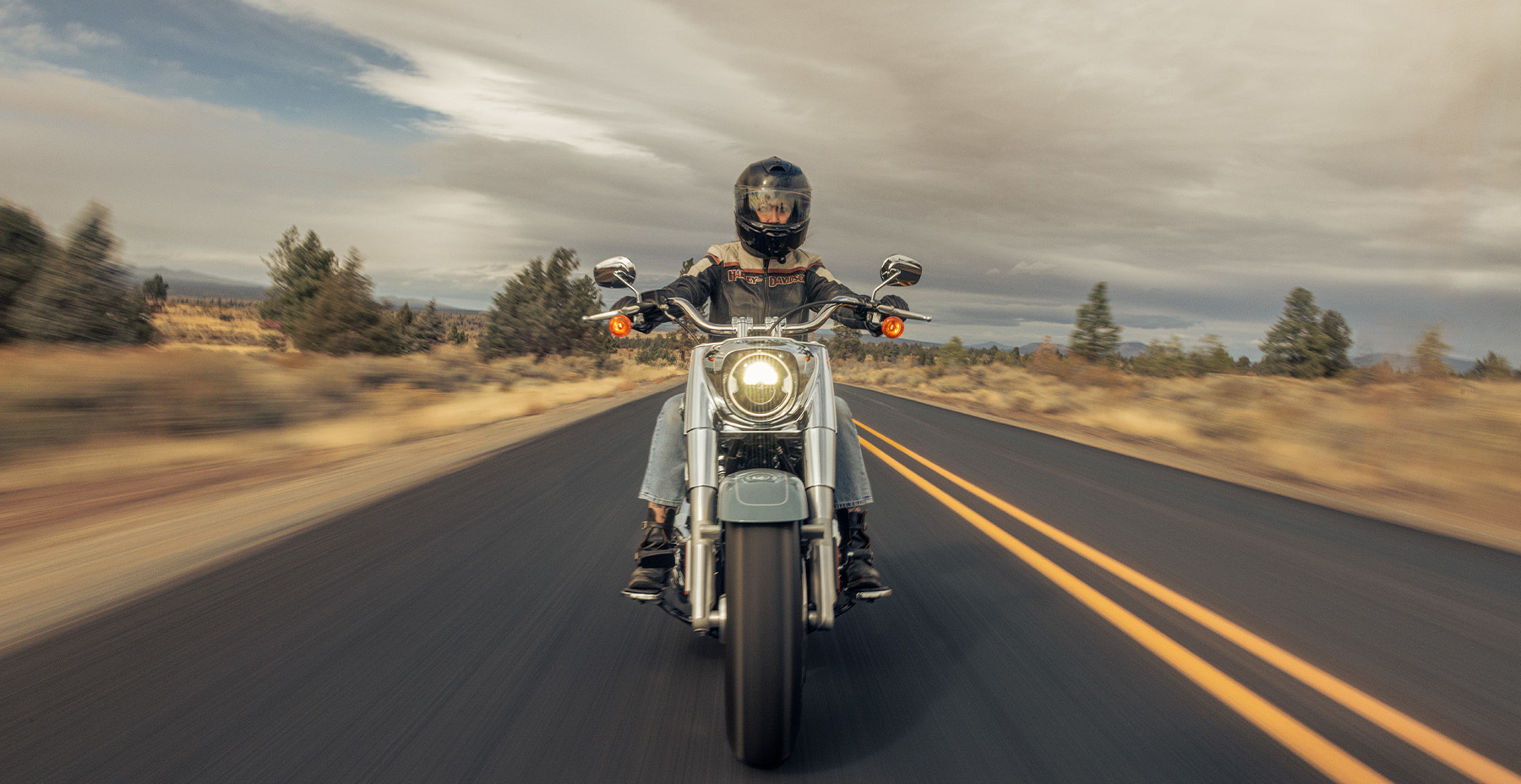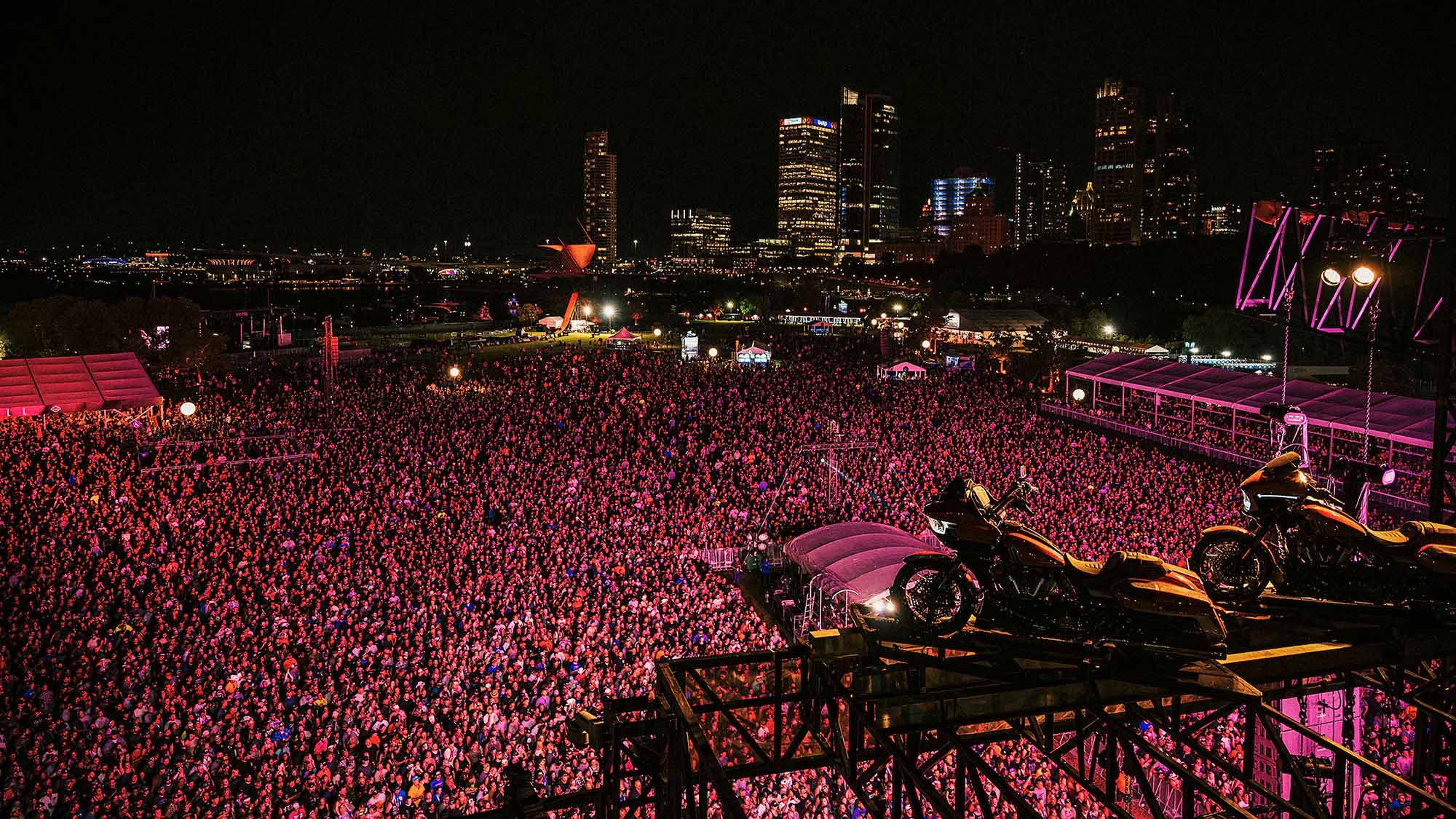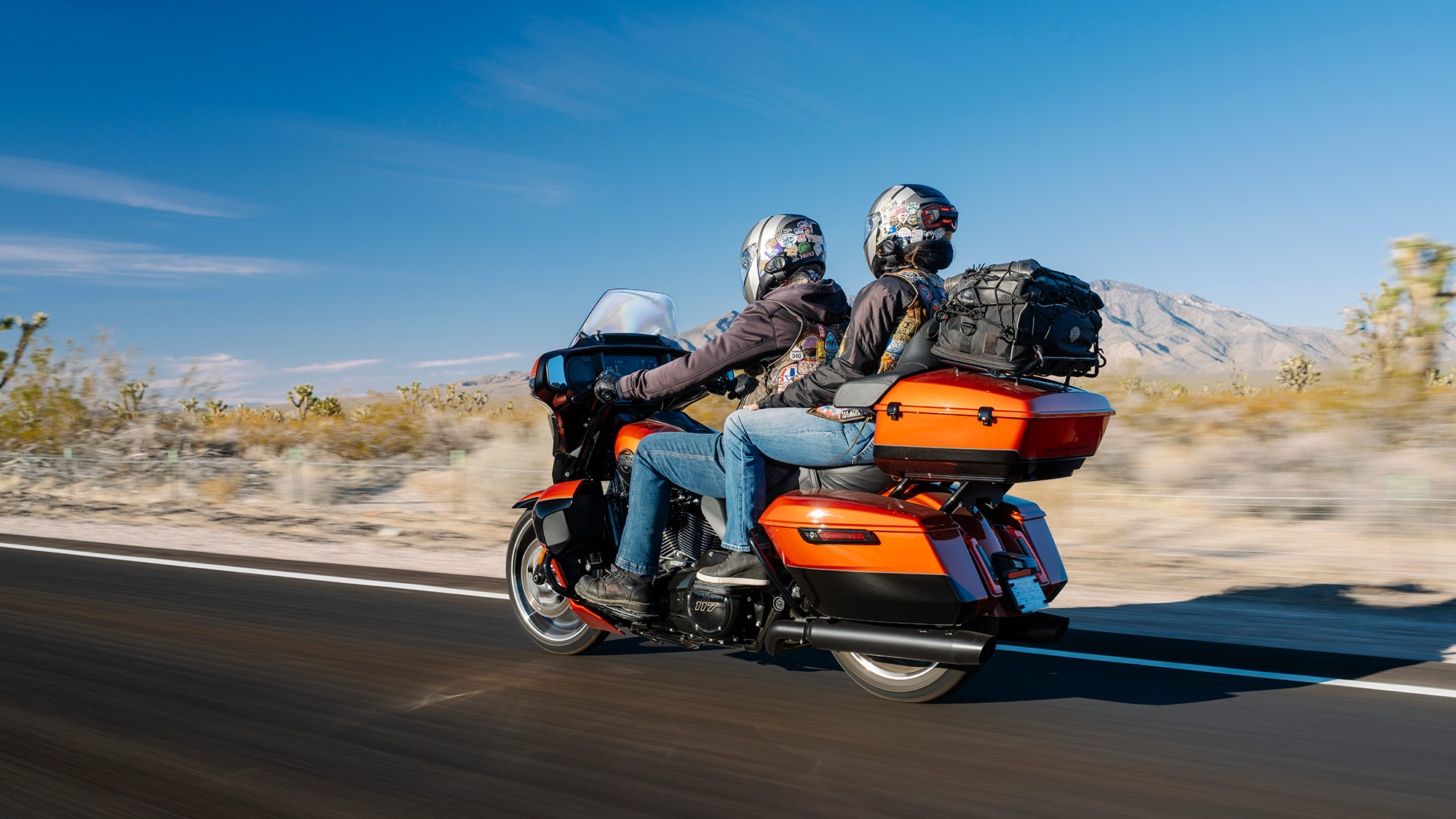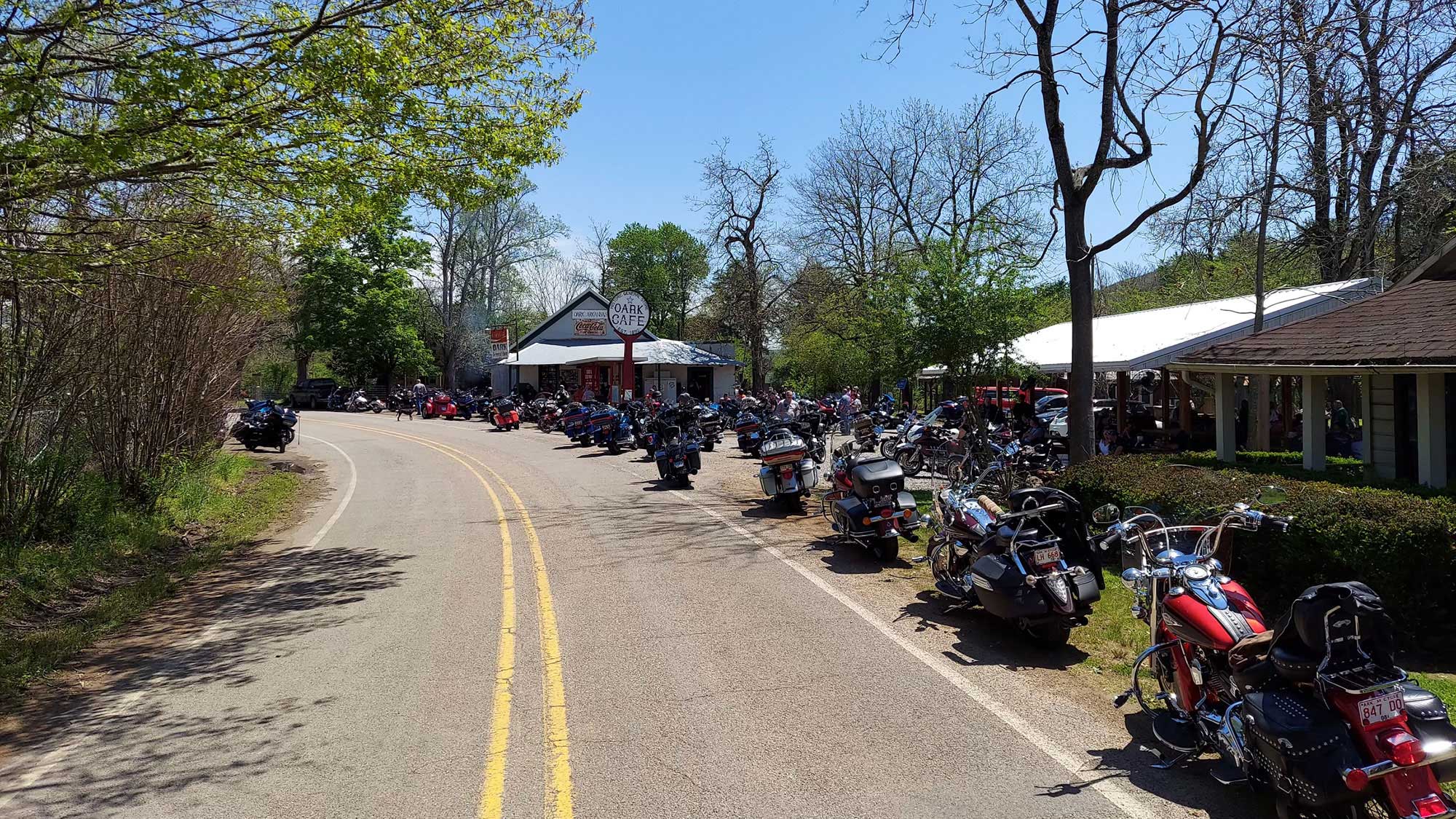
Riding Tips: How To Be Conspicious
Being seen is key to being safe on the road. Follow our tips on how to be conspicuous
Motorcycles are smaller and less noticeable than cars and other vehicles. Drivers may not be actively looking for motorcycles, and studies have shown that people subconsciously don’t see things they aren’t in the habit of noticing. Each rider has the duty to understand their disadvantage and actively take measures to make themselves more visible. Here are a few ways to become more conspicuous…
LIGHT IT UP
While there is divided opinion on whether riding with your high beam on during the day is a good idea, it can improve your visibility to oncoming drivers. It’s advisable to ride with your high beam on during the day if it’s allowable by law where you live.
Another way to draw attention is to tap the brakes once or twice when stopping. The flashing of the brake light will help draw attention when you stop or slow down – even if you’re slowing down without using your brakes. Of course, in an emergency situation, maximum stopping power is most important, and proper emergency stopping technique should override flashing your brake light. It’s also helpful to equip your bike with extra lighting. Auxiliary lights – such as Daymaker auxiliary and fog lamp kits – help make your motorcycle look bigger and brighter, day or night. Keep them on at all times while riding for maximum visibility.
And while we’re at it, how modern is your headlamp? Technology has improved greatly in recent years. Harley-Davidson offers a wide range of replacement headlamps that will help you see and be seen. High-tech products like the Harley-Davidson line of Daymaker LED headlamps (standard on some newer models) can make a big difference. Talk to your local Harley-Davidson dealer or visit harley-davidson.com/store to learn more.
WEAR IT WELL
Though dark motorcycle clothing is generally considered more fashionable, there are still ways you can maximize your visibility without compromising style.
Let’s start at the top with your helmet. Black is traditional; white is more visible. Maybe you’re not willing to give up your dark helmet, but how about adding some reflective tape? These days, it’s even available in black – so it’s barely noticeable in daylight but reflects brightly at night when caught by the lights of another vehicle. Even a little bit of carefully placed tape can make a big difference.
You might even consider having two helmets in your collection: one that’s dark and sleek for daytime and another that’s bright, reflective, and conspicuous for riding at night.
The same goes for your riding gear: Brighter is better. The easiest way to draw attention to yourself is to throw on a brightly colored reflective vest.
But you can also look for a riding jacket with built-in reflectivity. Harley-Davidson offers a range of high-vis apparel and gear if you’re in the market for something more eye-catching.
CONSIDER THE CONDITIONS
Before riding, also consider the ambient lighting conditions. What’s it like outside? Riding at night presents certain obvious challenges but so does riding in the fog – or riding at early morning or dusk.
Riding in fog can be even more challenging than riding at night because you can’t count on other vehicles’ headlights lighting up your reflective apparel. Visibility can be reduced to almost nothing–not to mention that the road surface is probably damp, which can make stopping and turning more hazardous. In some cases, it might even be best to pull over and wait it out or stop for the night. And remember not to use your high beam in foggy conditions.
Dawn and dusk present the challenge of potentially blinding glare. When the sun is low in the sky, it can effectively blind other drivers, particularly when the sun is behind you. This can also be true when riding in the winter. The farther north you are (in the Northern Hemisphere), the lower the sun gets in the sky, which can cause visibility issues even in the middle of the day. Here’s a tip: Any time you can see your shadow in front of your front tire, use extra caution. Assume that oncoming drivers are going to lose you in the glare, and be prepared to stop or take evasive action as needed.
BE SMART ON THE STREET
How you ride can also make a big difference in getting noticed. In general, the best place to be is the left third of your lane. This makes you most visible to oncoming traffic and also puts you in view (providing you’re not following too closely) of the driver-side mirror of the vehicle in front of you.
Once you’ve established this position as your “home base,” you can maneuver within the lane to make yourself more visible. For instance, imagine riding on a two-lane highway when you see a large truck coming from the other direction. It’s a passing zone, so there’s a chance a car might pull out to try to get around the truck. This would be a good time to move to the right side of the lane and make yourself more visible to any vehicles behind the truck. It also gives you the best opportunity to S.E.E.: Search, Evaluate, and Execute.
- When making your way through a crowded intersection, try to make eye contact with drivers who might inadvertently cross your path. This helps confirm that they know you’re there.
- A little nod or quick wave of acknowledgement can help seal the deal. But don’t assume they’ve seen you – they may be looking right past you.
- Don’t dwell on any one thing; take everything in. Watch the driver’s eyes, watch for tire movement, and keep an eye out for other potential conflicts or threats.
- Roll off the throttle to create more time to S.E.E. and be seen.
- Cover the controls to reduce reaction time.
- Change lane position to create movement that attracts the eye and helps drivers notice you.
- And don’t flash your headlight, as this can sometimes be perceived as a “go ahead” signal.
Always use your turn signal – even when it feels unnecessary, such as when leaving your driveway or pulling out of a parking lot onto an empty road. Make it a habit, an automatic action. It’s the best way to make sure you’ll remember to signal when it matters most.
A well-timed blip of your horn is another effective way to make sure you get noticed. Don’t overdo it, of course. Using your horn unnecessarily is obnoxious and does more harm than good to rider-driver relationships.
BE VISIBLE. THINK INVISIBLY.
When all is said and done, no matter how conspicuous you’ve made yourself, a good rule of thumb is to ride as if you’re invisible. Assume that other drivers (and riders) can’t see you, and act accordingly. This will help keep you in a defensive state of mind.
You can’t control how others drive around you. But you can do a lot to help make sure they see you – and be ready to react when they don’t.
First published in Issue 048 of HOG® magazine.
Tags:
Read more tales from the Harley Owners Group!
Events calendar
superscript subscriptFrom multi-day rallies to regional and touring rallies, there’s something for everyone in the coming year
New riding routes for 2025: part four
As part of RIDE 365, we select a handful of U.S. destinations each year that are famed for their riding experiences and reward members for completing them. We have 15 great rides for 2025—here are the next three…


